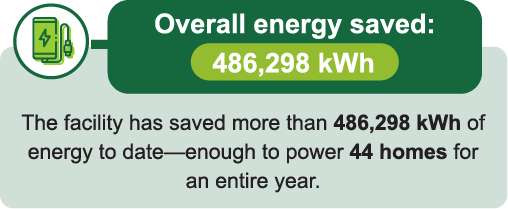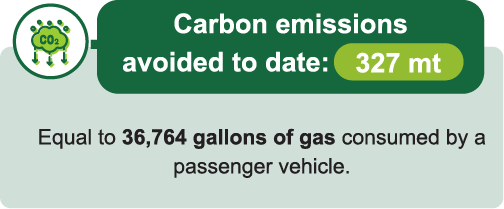-1.png)
Case Study: Budderfly + Chabaso Bakery
Budderfly + Chabaso Bakery:
A Brighter Path to Energy Efficiency

Chabaso Bakery, a 38,000-square-foot, family-owned artisan bread production facility, was dealing with dim, outdated lighting that negatively impacted employee experiences and didn’t show the bakery’s products in their best light. However, capital constraints introduced hurdles that made implementation difficult and finding a cost-effective solution essential.
CHALLENGES
Like many large-scale food manufacturers, Chabaso needed upgrades that could improve working conditions, reduce energy costs, and fit within tight budget constraints without disrupting production. Key challenges included:

Dim, outdated lighting:
Reduced visibility and safety in production areas and break rooms negatively impacted employee morale and overall bakery facility experience.
High energy consumption:
Inefficient lighting and HVAC systems drove up operational costs and limited opportunities to invest in other upgrades.
Aging infrastructure:
Outdated fixtures and thermostats made it harder to track energy use and maintain reliable production environments.

Operational disruption risk:
Implementing upgrades in a running bakery facility could interrupt production if not planned carefully.
BUDDERFLY’S SOLUTION
Budderfly invested $55,000 in lighting upgrades, smart thermostats, and metering. The project moved quickly, and within weeks the facility's lighting had been fully upgraded. The Budderfly team provided:
LED lighting:
Dim, outdated fixtures were replaced with bright, energy-efficient LEDs, improving visibility, safety, and the overall aesthetic of the facility.
Thermostats and metering:
Smart thermostats and energy meters were installed to provide better control over heating/cooling and insight into energy usage.
Rapid implementation:
Upgrades were completed within weeks with minimal disruption.
No-risk, high-impact investment:
Improvements yielded quick returns and visible results, while laying the foundation for future energy efficiency projects.
RESULTS



Efficient LED lighting led to lower energy and maintenance costs, preserving capital for other operational priorities.

The facility transformed visually, going from dim and dated to a bright, engaging environment.

Thermostats and metering provided better control and visibility into energy usage.
CONCLUSION
Budderfly has recommended additional investments in refrigeration, HVAC, and potential battery storage. These future upgrades could further reduce energy costs, improve operational efficiency, and continue to enhance the facility.

